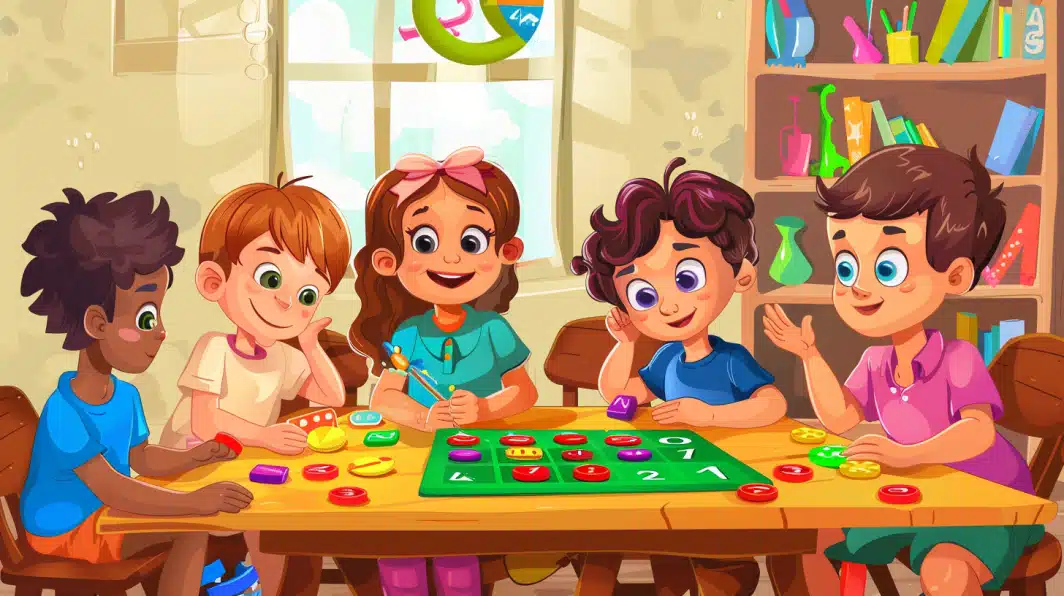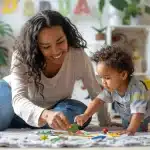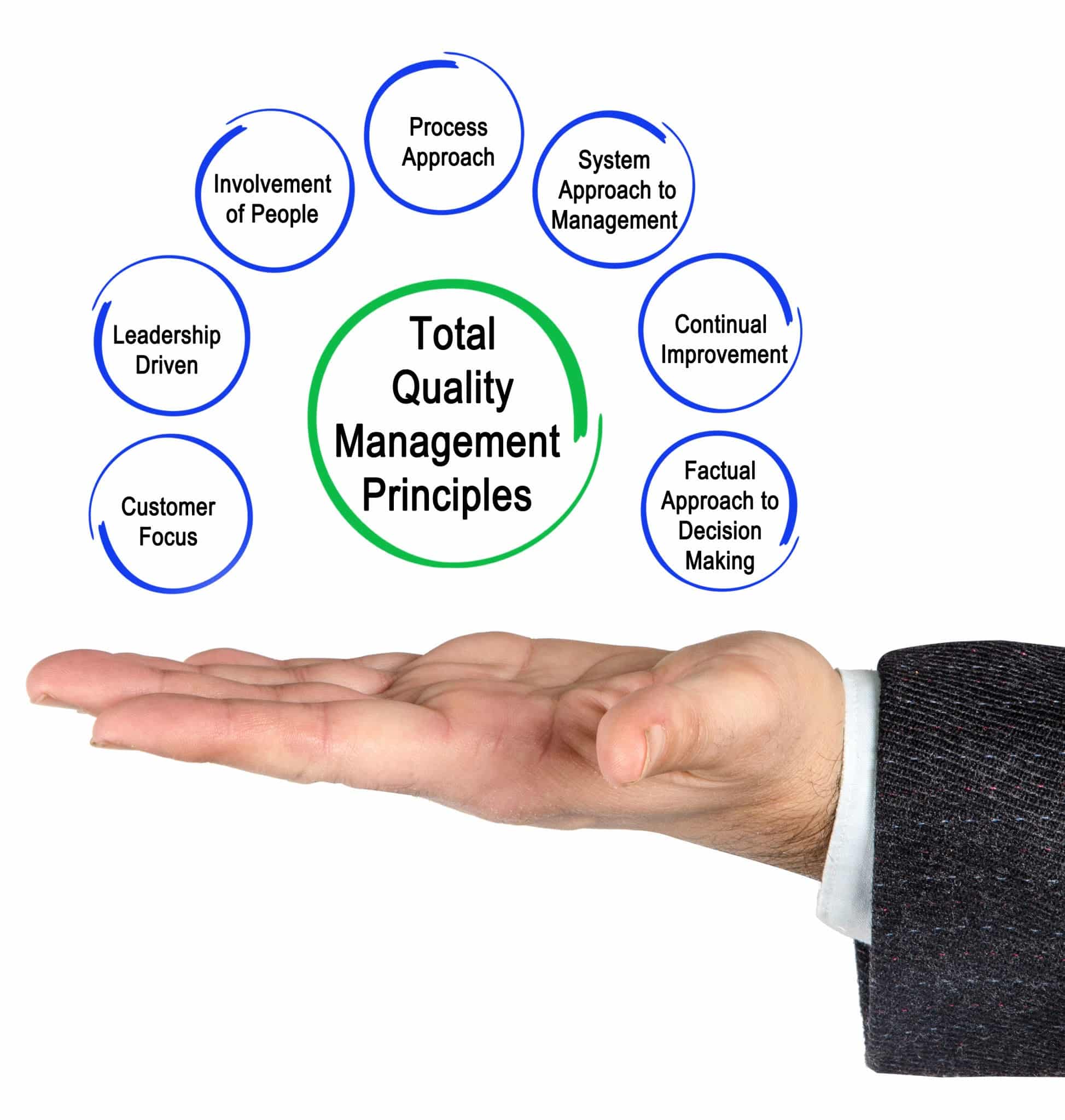Learning math can sometimes feel dull and repetitive for students, making it challenging to keep them engaged and excited about the subject.
However, incorporating fun, hands-on activities into math lessons can help students better understand complex concepts and enjoy learning.
This blog post will explore how using simple, everyday objects to create interactive math lessons can take your teaching to the next level.
This post offers ideas and tips for making math lessons more engaging and effective, from simple sorting activities for young learners to probability experiments and geometry challenges for older students.
Get ready to discover a world of possibilities for enhancing your math lessons with these creative object-based activities!
Hands-On Activities for Mathematics Education
1. Manipulatives
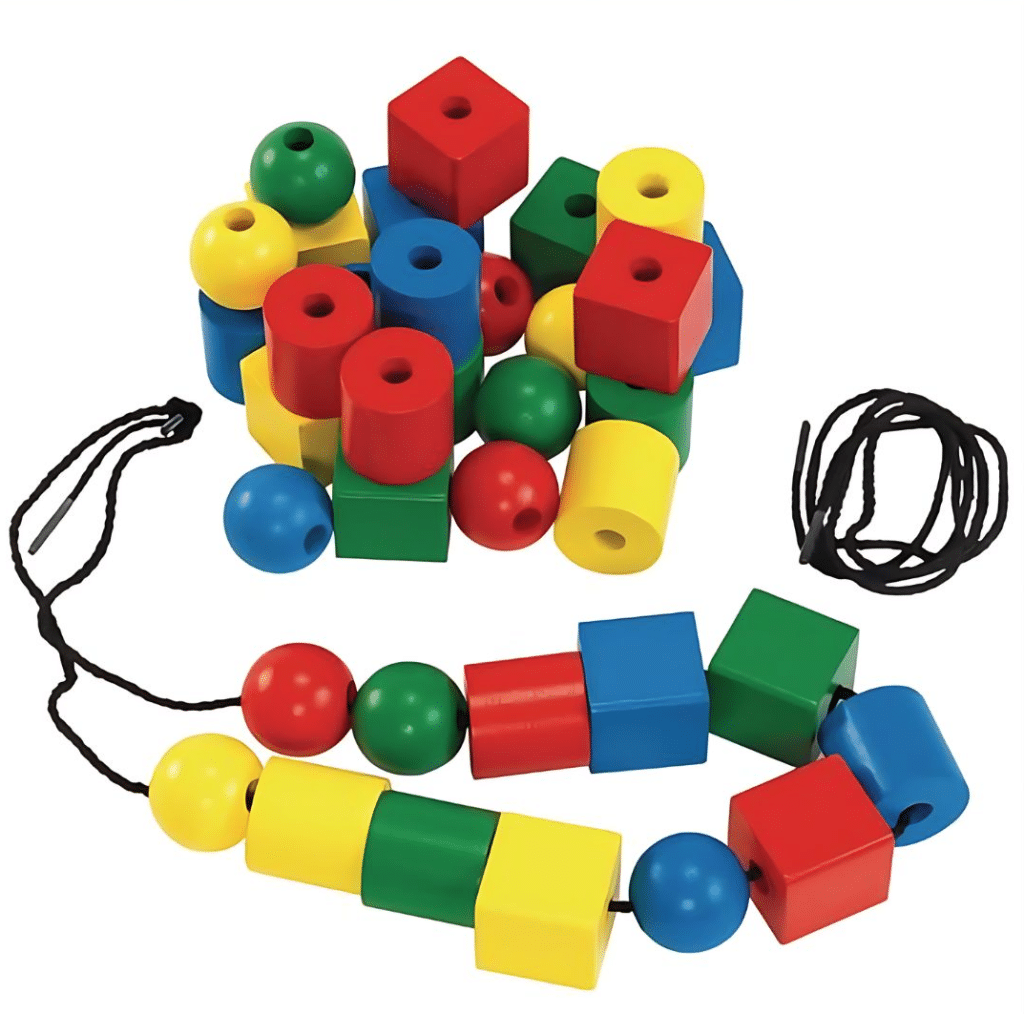
Involving students in learning through physical objects can greatly improve their educational experience.
Manipulatives help students visualize and grasp complex mathematical ideas by making them more concrete and accessible.
Everyday items like blocks, beads, and counters can teach foundational math skills such as basic arithmetic, fractions, and patterns.
These objects allow students to interact with mathematical concepts tangibly.
Example Activity: Creating patterns with colored beads to understand sequences.
- Procedure: Give students an assortment of colored beads and string. Ask them to create repeating patterns and sequences using the beads.
- Objective: This activity helps students identify and anticipate patterns, a crucial skill in mathematics.
Benefits
- It improves tactile learning, making abstract concepts more concrete and easier to understand.
- It promotes active participation and hands-on exploration, keeping students engaged in the learning process.
- It leads to better retention and understanding of mathematical principles by providing a multi-sensory learning experience.
2. Geometry with Everyday Objects
Discovering geometric shapes using everyday objects makes learning geometry hands-on and enjoyable for students.
Common items like strings, paper, and sticks can be used to investigate geometric shapes, angles, and measurements.
These objects help students connect geometry to the world around them.
Example Activity: Constructing shapes with straws and clay to understand vertices and edges.
- Procedure: Provide students with straws and clay. These materials guide them in creating geometric shapes such as triangles, squares, and pyramids.
- Objective: Through hands-on construction, this activity helps students understand the properties of shapes and their components (vertices and edges).
Benefits
- It provides a concrete understanding of geometric principles, making them easier to grasp.
- It improves spatial reasoning and visualization skills by allowing students to manipulate and create shapes.
- It encourages creativity and problem-solving as students work to construct and analyze geometric forms.
3. Measurement Activities
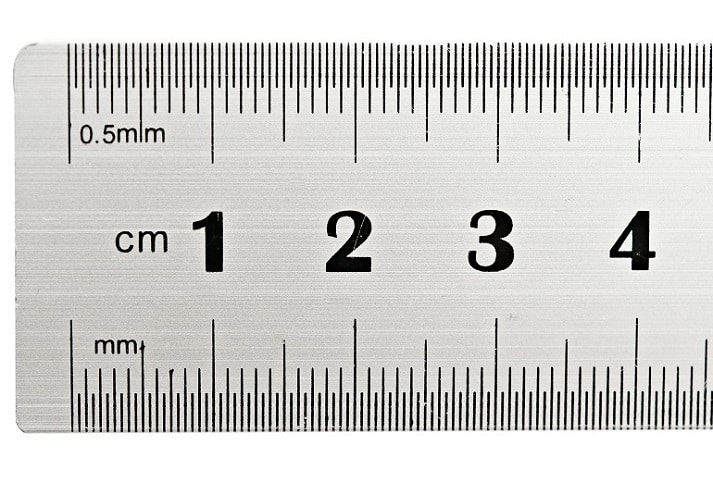
Measurement activities connect mathematical concepts with real-world applications, making learning relevant and engaging for students.
Tools like rulers, measuring tapes, and scales can be used to teach units of measurement, conversions, and estimation.
These activities help students develop practical math skills applicable to everyday life.
Example Activity: Measuring classroom objects and comparing lengths.
- Procedure: Provide students with rulers and measuring tapes. Ask them to measure various objects around the classroom and record their lengths. Have students compare and convert measurements between different units.
- Objective: This activity reinforces understanding of units of measurement and their conversions while also allowing students to practice estimation skills.
Benefits
- It applies math to real-world scenarios, making learning more meaningful and relevant.
- It enhances students’ ability to estimate and measure accurately, essential skills for many careers and daily tasks.
- It builds a foundation for more advanced mathematical and scientific learning by familiarizing students with units and measurement tools.
Visual Aids for Mathematics Education
4. Graphing with Objects
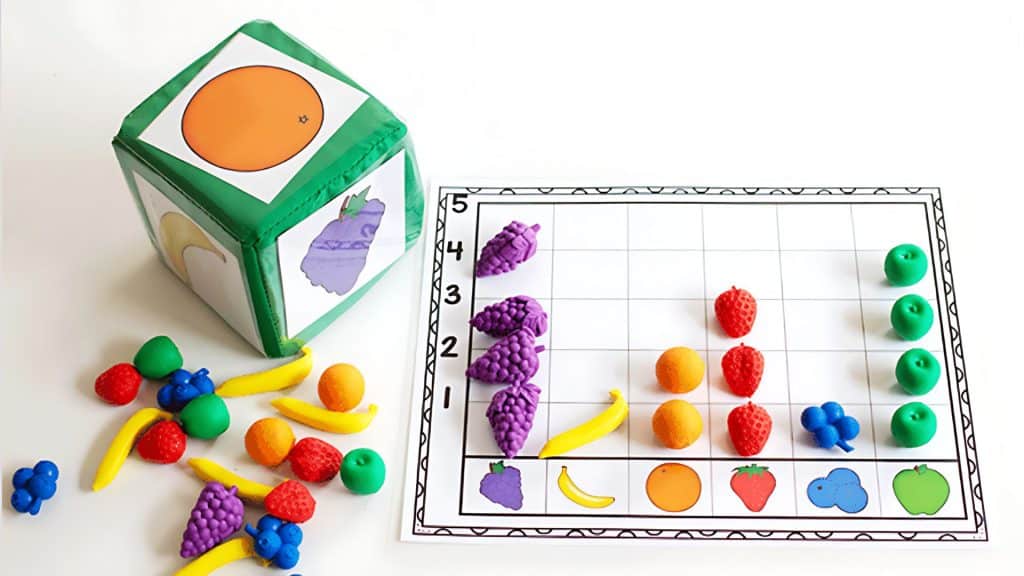
Visual aids like graphs can help students understand statistical concepts.
Creating these graphs using everyday objects makes the process interactive and engaging, helping students connect abstract ideas to tangible items.
Coins, buttons, or candies can create bar graphs and pie charts.
These objects are a hands-on way for students to learn about data representation and analysis.
Example Activity: Sorting and counting different colored candies to create a bar graph.
- Procedure: Give students a mix of colored candies. Ask them to sort the candies by color and count the number of each color. Use this data to create a bar graph on a chart paper or whiteboard.
- Objective: This activity helps students understand how to collect, sort, and represent data visually, making abstract concepts more concrete.
Benefits
- Visual representation of data helps in understanding statistical concepts more easily.
- It encourages hands-on participation and engagement, keeping students interested in the lesson.
- It makes abstract data analysis more concrete and relatable by using familiar objects.
5. Fraction Pizzas
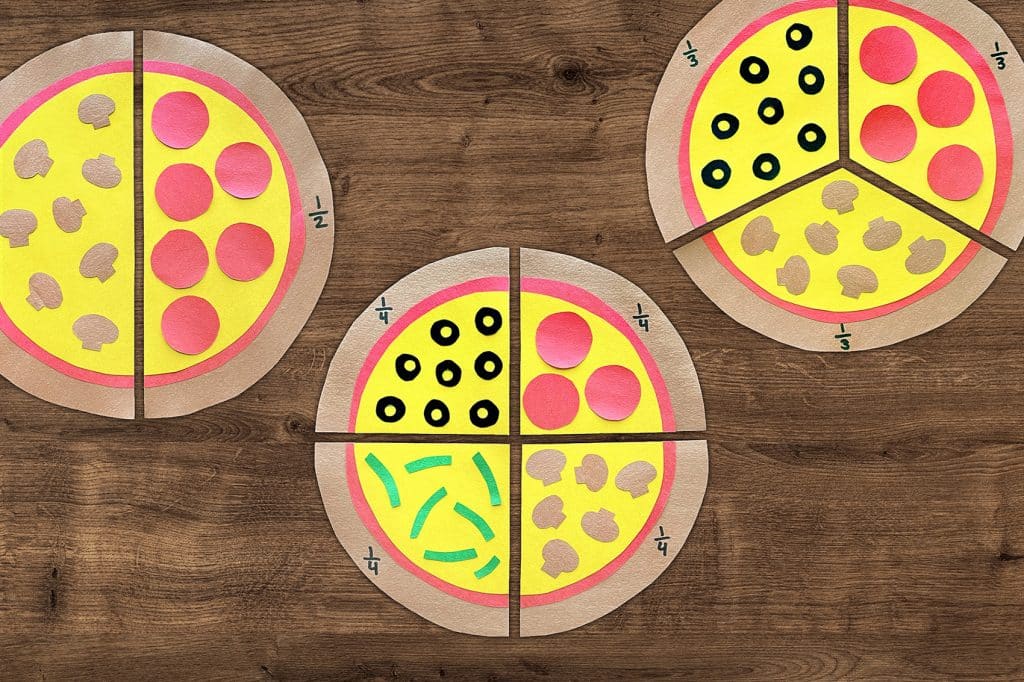
Teaching fractions can be challenging, but using familiar objects like pizza cutouts can make the process easier and more enjoyable for students.
Paper or cardboard cutouts of pizzas can be used to teach fractions and addition and subtraction of fractions.
This visual aid helps students understand the concept of parts and wholes more easily.
Example Activity: Dividing a paper pizza into slices to demonstrate different fractions.
- Procedure: Create paper or cardboard cutouts of pizzas and divide them into slices representing different fractions (e.g., halves, quarters, eighths). Use these slices to perform addition and subtraction of fractions.
- Objective: This activity simplifies the concept of fractions and operations involving fractions by providing a familiar, real-world context.
Benefits
- It simplifies complex fraction operations by presenting them in a familiar context.
- It enhances understanding of fractions, making it easier for students to visualize parts of a whole.
- It provides a hands-on learning experience, reinforcing the concept of fractions through tactile manipulation.
6. Interactive Number Lines
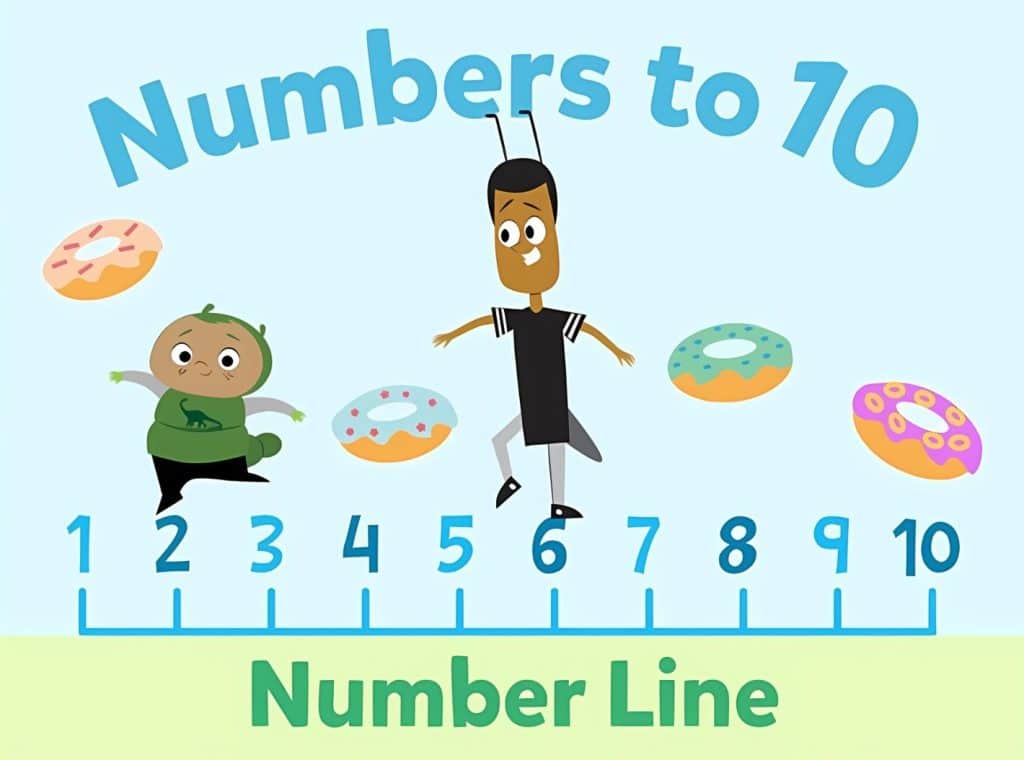
Number lines are a fundamental tool for teaching arithmetic and number sequences.
Making them interactive can help students better understand these concepts.
Create large number lines on the floor using tape and have students physically jump to numbers to solve problems.
This kinesthetic approach engages students and makes learning more enjoyable.
Example Activity: Solving addition and subtraction problems by jumping along the number line.
- Procedure: Use tape to create a large number line on the classroom floor. Write numbers at regular intervals. Pose addition and subtraction problems and have students jump to the correct numbers to find the solutions.
- Objective: This kinesthetic approach helps students understand number sequences and arithmetic operations through physical activity, making abstract concepts more concrete.
Benefits
- Kinesthetic learning aids in grasping number sequences and arithmetic by involving physical movement.
- It makes learning interactive and fun, especially for younger students who enjoy hands-on activities.
- It reinforces understanding of mathematical operations through movement and visual aids.
Real-Life Applications
7. Shopping Simulations
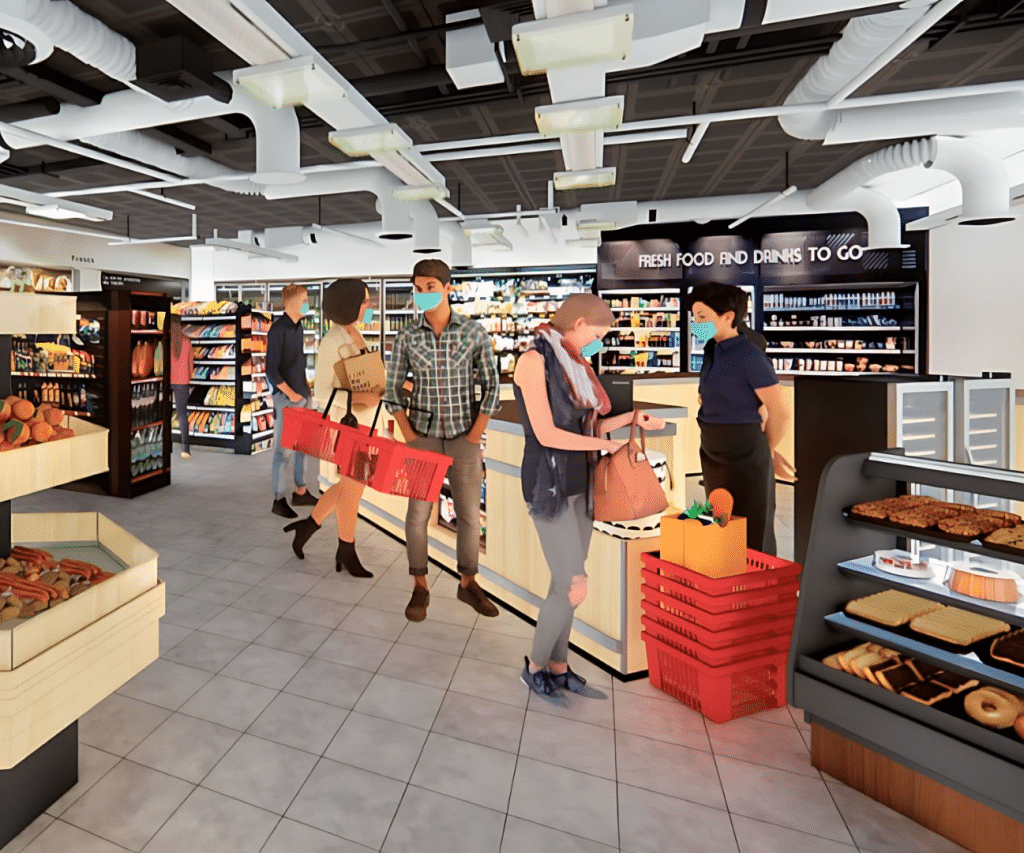
Real-life applications make math relevant and engaging for students.
Shopping simulations are a practical way to teach arithmetic and money management skills in a context that students can easily relate to.
Set up a mock store in the classroom with items labeled with prices for students to practice addition, subtraction, and making changes.
This hands-on activity allows students to apply math skills in a realistic setting.
Example Activity: Using play money to buy and sell items.
- Procedure: Create a classroom store with various realistically priced items. Provide students with play money and shopping lists. Have them purchase items, calculate totals, and make changes.
- Objective: This activity helps students understand the practical use of arithmetic in everyday shopping scenarios, reinforcing their skills meaningfully.
Benefits
- They teach practical money management and arithmetic skills that students will use throughout their lives.
- They reinforce addition, subtraction, and multiplication through real-world applications, making these concepts more concrete.
- They enhance problem-solving and critical thinking as students navigate buying and selling scenarios.
8. Cooking with Math
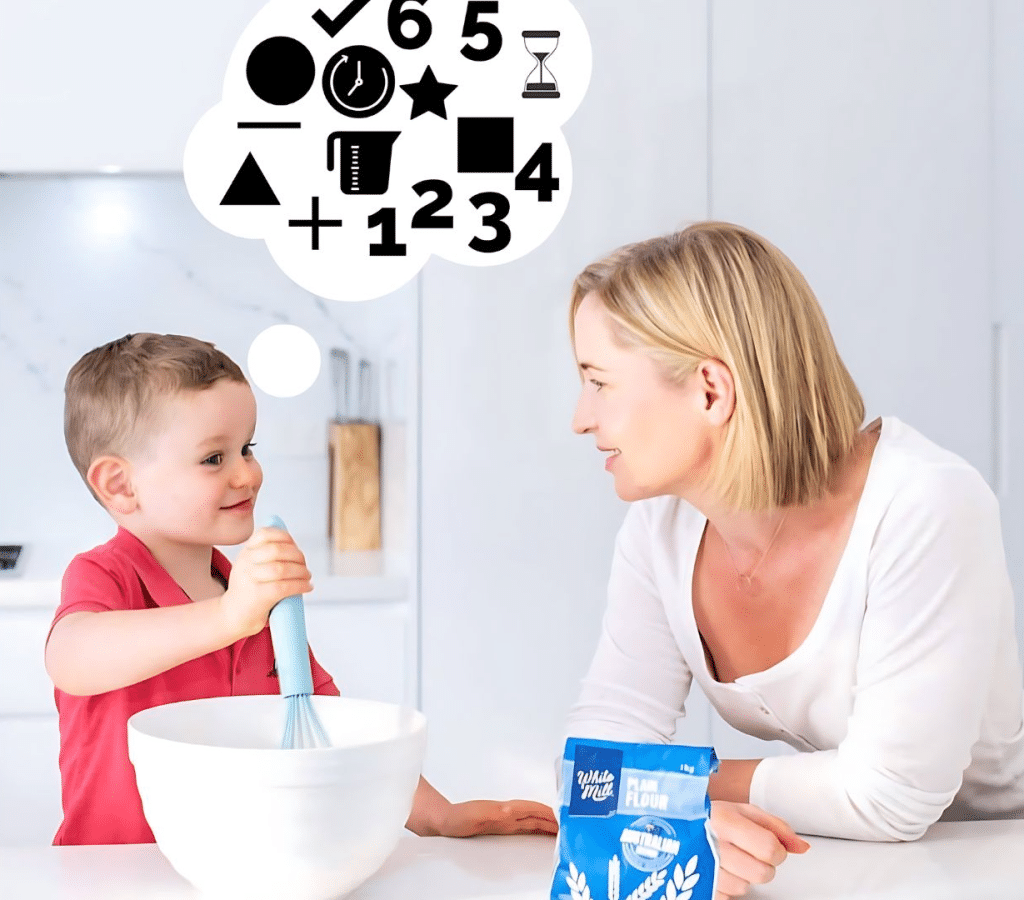
Cooking offers a fun and engaging way to apply math concepts.
It connects abstract math to everyday activities, making learning enjoyable and relevant for students.
Following simple recipes can teach measurements, fractions, and ratios in a hands-on manner.
Students can learn how to accurately measure ingredients and understand how proportions work in a practical setting.
Example Activity: Measuring ingredients to make a recipe, doubling or halving it to understand ratios.
- Procedure: Select a simple recipe and have students measure the ingredients. Ask them to double or halve the recipe to practice using fractions and ratios.
- Objective: This activity demonstrates the practical application of fractions and ratios in cooking, helping students see the relevance of these concepts in everyday life.
Benefits
- It connects math to everyday activities and practically reinforces fraction skills.
- It develops an understanding of measurements, proportions, and ratios, which are essential life skills.
- It encourages teamwork and following instructions, promoting collaboration and attention to detail.
9. Construction Projects

Building projects provide a hands-on approach to learning math.
They practically apply measurement, geometry, and estimation, making these concepts more tangible for students.
Constructing small models or structures allows students to apply measurement, geometry, and estimation concepts in real life.
This hands-on approach helps students see the relevance of math in engineering and design.
Example Activity: Constructing a small bridge using sticks and glue, measuring lengths and angles.
- Procedure: Provide students with sticks, glue, and measuring tools. Instruct them to design and build a small bridge, measuring and cutting materials to specific lengths and angles.
- Objective: This activity applies geometric and measurement concepts in a practical engineering project, helping students understand how math is used in real-world applications.
Benefits
- They provide a practical application of math in engineering and design, making abstract concepts more concrete.
- They enhance spatial reasoning and problem-solving skills as students work to create structures that meet specific criteria.
- They encourage creativity and teamwork, promoting collaboration and innovation in the classroom.
Games and Puzzles
10. Math Bingo

Games can transform math practice into a fun and engaging activity.
Math Bingo is an innovative way to combine learning with competition, making it an exciting addition to any math lesson.
Playing Bingo with math problems on the cards instead of numbers is a simple yet effective way to practice math skills.
This twist on the classic game keeps students engaged and motivated to solve problems quickly.
Example Activity: Solving multiplication problems to mark the Bingo card.
- Procedure: Create Bingo cards with multiplication problems in each square. Call multiplication results, and students solve problems to mark the corresponding squares on their cards.
- Objective: This activity helps reinforce multiplication skills in a fun and competitive environment, encouraging students to practice math facts.
Benefits
- It makes practice fun and competitive, enhancing student engagement and motivation.
- It reinforces problem-solving skills and quick thinking as students race to solve problems and mark their cards.
- It encourages active participation and a desire to learn, as students are eager to play and win the game.
11. Math Board Games
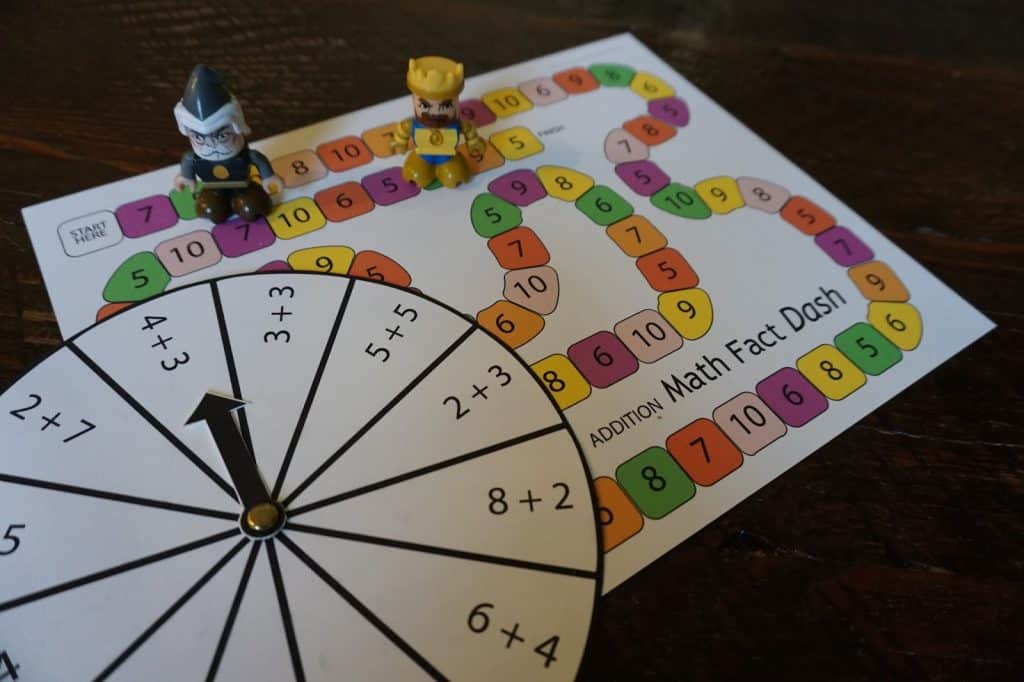
Board games can make learning math enjoyable and interactive.
They offer a strategic approach to practicing math skills, allowing students to apply their knowledge in a game setting.
Using or creating board games incorporating math challenges and questions effectively engages students in math practice.
These games can be designed to cover a wide range of math concepts and skills.
Example Activity: A game where players solve math problems to move forward.
- Procedure: Design a board game where players must answer math questions correctly to advance. Include math problems such as addition, subtraction, multiplication, and division.
- Objective: This activity encourages strategic thinking and problem-solving as players work to progress through the game, reinforcing their math skills in a fun and challenging way.
Benefits
- They encourage strategic thinking and decision-making as students plan their moves and solve problems.
- They make learning enjoyable through gameplay, keeping students engaged and motivated.
- They provide varied math practice in an engaging format, covering a range of concepts and skills.
12. Puzzle Challenges
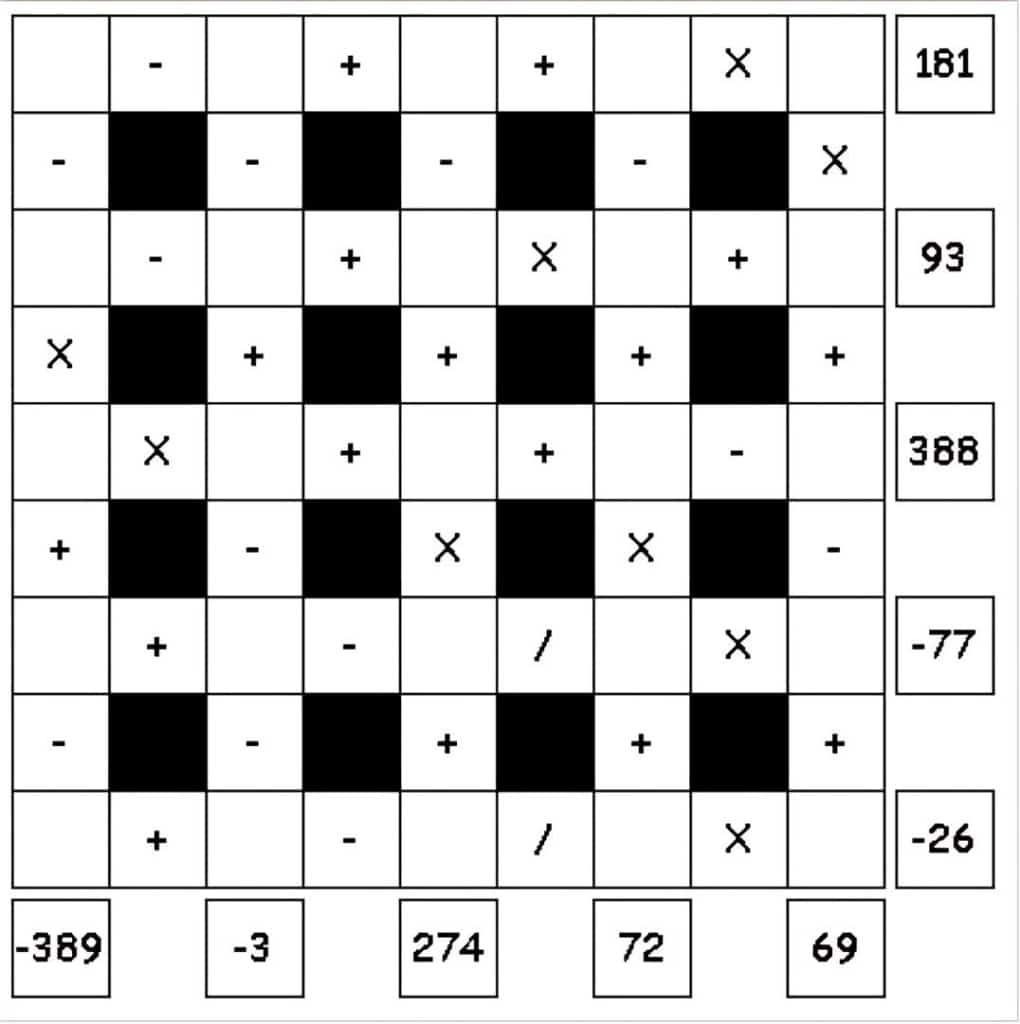
Puzzles are excellent tools for developing critical thinking and problem-solving skills.
They challenge students to apply math concepts in new and interesting ways, helping them develop a deeper understanding of the subject.
Using puzzles like Sudoku, logic puzzles, and math riddles is an effective way to develop critical thinking skills in math students.
These puzzles require students to analyze problems, apply logical reasoning, and think creatively to find solutions.
Example Activity: Completing a Sudoku puzzle to practice number placement and logic.
- Procedure: Provide students with Sudoku puzzles of varying difficulty levels. Explain the rules and guide them through the process of solving the puzzles.
- Objective: This activity helps students practice logical reasoning and number placement, developing their problem-solving skills in a fun and challenging way.
Benefits
- They enhance problem-solving abilities and logical reasoning, helping students approach math problems more analytically.
- They provide a mental workout and strengthen cognitive skills, improving overall brain function.
- They offer a challenging and enjoyable way to practice math concepts, keeping students engaged and motivated.
Conclusion
Object lessons are a fantastic way to make math education more engaging, interactive, and relevant for students.
Adding hands-on activities, visual aids, real-world examples, and games to your math lessons can help students better understand and enjoy the subject.
These enjoyable and imaginative methods for teaching math improve problem-solving abilities, logical thinking, and a passion for learning that will benefit your students for years to come.
So, begin the power of object lessons and watch your students thrive in their mathematical journey.
Are you ready to transform your math classroom into a world of excitement and discovery?
Start implementing these object lessons today and witness the incredible difference they can make!

